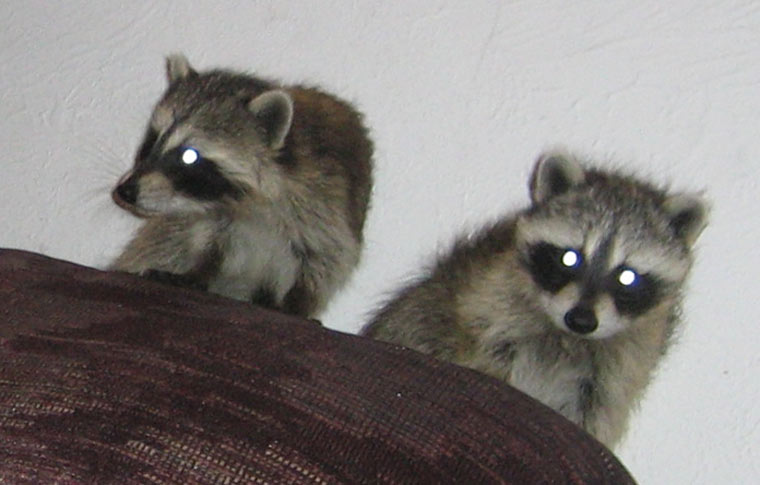-
info@aaanimalcontrol.com
Call us for help in your town
Humane Wildlife Education
What should I do with a wild animal after I catch it?
Need wildlife removal in your hometown? We service over 500 USA locations! Click here to hire us in your town and check prices - updated for year 2020.
There are a lot of risks associated with capturing a wild animal, and that goes across the board. It doesn’t really matter what animal you're talking about. They are all about as dangerous as each other. Rats and mice carry a number of diseases, as you probably already know, but other animals are just as bad as these — animals that you're probably innocently feeding every day. We would never advise you do this, of course, as this just encourages these wild critters to break in and take a closer look at what you're offering. They'll get vicious too, particularly if you're taking about stroppy-teenager-style animals, just like the raccoon. If you've been feeding them for a while and then you stop, all of a sudden, they will get annoyed. If this is a direct-contact situation, the raccoon might lash out.

Other animals are just as bad too, even those that you thought were probably quite safe. You've got the awful skunk-spray with the black and white little terrors, and armadillos can carry the same bacteria that causes leprosy in humans. (No, we didn't make that up.)
Bats can give you histoplasmosis, a very nasty disease that has a tendency to effect the respiratory system, and more specifically, the lungs. Chipmunks can give you hantavirus, and salmonella too, and other animals are also guilty of spread the latter, especially opossums. Squirrels can pass along tularemia, encephalitis, Colorado tick fever, plague and louse-borne typhus too, and that's before we start talking about the parasites. Fleas, ticks and mites are a very big problem in certain places across North America, and these assist with the spread of Lyme disease. This is spread be infected ticks, and causes a rather nasty bacterial infection that is infectious and can cause problems with memory problems, exhaustion, joint pains and more for six months or more after the infection was ‘treated’.
In short, capturing a wild animal yourself at all is a pretty risky maneuver and things get all the more complicated when it comes to figuring out what to do next.
You can’t just release these animals back into the wild again. If you haven’t sealed up your home yet, or worked out how the creature has been getting in all this time, and cleaned up your yard, perhaps adding modifications where necessary, the animal is just going to become your problem again. If it doesn't become your problem, it will become a problem for your neighbors instead. Or someone else down the road. With certain wild critters, rats and mice especially, the best outcome for everyone, including the animal, is to use snap traps. These are designed to kill the rodent on impact, without causing pain or injury first. If the animal must die, and with rodents this is very much the case, the death must be instant. It must not hurt.
If you’re talking about killing bigger animals, on the other hand, animals that aren’t rats or mice, there are special relations that you must follow, and these will change from state to state. You should always ensure that you are not unintentionally killing other animals in your quest to protect your home from intruders. There have been cases of rare wolves dying because of traps set up to lure in and kill coyotes, and in this case, the death was by way of cyanide poisoning, causing the animal to suffocate to death after the body was rendered incapable of absorbing oxygen.
In 2016 alone, it was reported that close to 3,000 animals were killed accidentally by traps and poisons designed to lure in a different animal. Family pets are often killed by mistake, and turtles, otters, bears, foxes, coyotes, bobcats, and even rarer animals, such as wolves, are caught up in the process to keep nuisance animal numbers down. 415 otters alone were culled by accident in just 2016 alone, it was reported, and you can add to that total 334 mountain lions, over 400 black bears, close to 1,000 bobcats, 400-odd grey wolves, and somewhere in the region of 20,000-25,000 beavers. These numbers are also not likely to include the number of pupss that died as a result of losing a mother. Some of these animals were deliberately trapped and destroyed, but many of them would have been culled by accident, usually by a homeowner just trying to get rid of a raccoon or similar nuisance pest.
The process of removing a wild animal from your home, and then making sure it doesn’t come back again, is a complex one, and one that must be worked on a case by case basis. Individual plans must be set up to work with a specific building type, or maybe a particular species of animal. Bats can only be moved along at certain times of the year, and there are particular species which must be handled with extreme caution, because of their endangered or threatened status.
If you have caught a wild animal, call in the professionals. Get them to do the job for you. All of the legalities, and humanities, will be taken into account for you.
For more information, you may want to click on one of these guides that I wrote:
How To Guide: Who should I hire? - What questions to ask, to look for, who NOT to hire.
How To Guide: do it yourself! - Advice on saving money by doing wildlife removal yourself.
Guide: How much does wildlife removal cost? - Analysis of wildlife control prices.
animals in the attic
noises in the attic


















